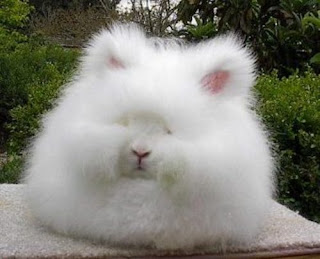History of Rabbit
Found in several parts of the world, rabbits are small mammals belonging to the leporidae family. The rabbits  have had long history of association with the humans. Their history dates back to 3000 BC, when the Phoenician sailors discovered these animals in a place, which they called ‘the land of the seraphs’.
have had long history of association with the humans. Their history dates back to 3000 BC, when the Phoenician sailors discovered these animals in a place, which they called ‘the land of the seraphs’.
The Romans consumed rabbit meat extensively. Especially Roman soldiers were fed rabbit meat. They had even built rabbit enclosures known asleporaria.
Rabbits in Middle Ages
During the middle ages, the monasteries started keeping rabbits as pets. It is recorded that rabbits were exchanged by monasteries between Germany and France in 1194. Domestication of the first European wild rabbit took place at the same time. It is also said that Middle age women of the feudal gentry domesticated the rabbits.
13th century Britain witnessed the launch of these animals on its soil for the very first time. Soon rabbits gained popularity among the British. It is said that by the 16th century, King Henry VIII owned a leporaria large enough to actually hunt around. Queen Elizabeth is known to have maintained ‘rabbit islands’, which were atolls in lakes and rivers where rabbits could flourish. Today there exist over 800 rabbit islands in the oceans and lakes all over the world.
Spread of Rabbits
During the 17th and 18th centuries, the world explorers took the European rabbit to the other parts of the world. Rabbits were brought to Australia by Captain Cook during the 1770s. The Industrial Revolution brought more and more people into the urban areas. People started keeping rabbits as pets as it gave them a sense of being connected to the country. Gradually rabbit selling gained importance as rabbit owners promoted their wares by associating rabbits with children and innocence.
Rabbits in the twentieth century
Breeding rabbits became a popular activity at the turn of the 20th century. Breeding clubs were formed including the American Rabbit Breeding Association which now recognizes 45 official rabbit breeds. Consumption of rabbit meat became popular during the two world wars. Governments across countries encouraged to raise rabbits to help feed soldiers. In 1944, 28 million rabbits were raised in United States alone. However, after the war, the demand for rabbit meat gradually declined.
The mid 20th century saw a murkier side of rabbit history. Absence of natural predators resulted in the multiplication of rabbits at an alarming rate turning them into agricultural pests. Australia is best known for rabbit overpopulation It is against the law to own a pet rabbit in the Australian state of Queensland. The late 20th century saw scientific experiments being carried out on rabbit. In 1992, the rabbit was the second animal to be successfully cloned.
Rabbits in culture
Much loved animals, time and again rabbits have been referred to across various cultures worldwide. They were seen as paradoxical creatures symbolizing intelligence and foolishness, femininity and androgyny, cowardice and courage, raging sexuality to absolute virginity. In some cultures, the hare is associated with the moon. In Greco-Roman myth, the hare represents love and abundance.
Christianity holds the rabbit in a less favorable light. In Christianity rabbits are often associated with witches. However despite such views, rabbits could be spotted in many Renaissance paintings such as Titian’s Madonna with Rabbit(1530).
Rabbits in literature
Moving on to literature, rabbits and hares have appeared in several classics. The best known in this category is the Tale of Peter Rabbit by the British author Beatrix Potter. The White Rabbit and March Hare are two popular characters from Lewis Carol’s classic Alice in Wonderland. In films and cartoon, Bugs Bunny happens to be the best known rabbit trickster till date.

No comments:
Post a Comment